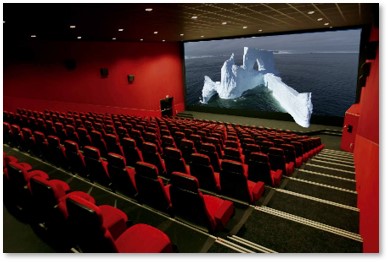At the end of one year and the beginning of another, writers of all kinds create lists of things that happened over the previous 12 months, We see lists of the best whatever, the most profitable things, the biggest surprises, the people who have died, the predictions that came true and those that didn’t.
No New Year’s Resolutions
 I don’t make predictions Or resolutions, for that matter. They just put pressure on you to do things you know you should do but really don’t want to. That’s why the parking lot at the gym fills up in January and February, then goes back to normal in March. We gym die-hards heave a sigh of relief.
I don’t make predictions Or resolutions, for that matter. They just put pressure on you to do things you know you should do but really don’t want to. That’s why the parking lot at the gym fills up in January and February, then goes back to normal in March. We gym die-hards heave a sigh of relief.
But I do write blog posts regularly during the month. Every months. This year, I changed my blogging rules so the 2025 Posts include my opinions about our government and how it’s working—or not. I had a good reason: the shift from democracy to oligarchy and kakistocracy needs all the insight, reaction, and analysis it can get. In fact, once I had lifted the ban, I wrote more posts on different aspects of American government and the current administration than on any other topic.
Round up of 2025 Posts
So here I offer my roundup of 2025 posts. It covers a wide variety of subjects, including my posts on government function and dysfunction. I organized my 2025 posts by topic in chronological order to make it easy for you to find the ones in which you might be interested.
 You may notice far fewer posts about movies simply because we now go to a theater only rarely. It has to be a “big screen” event to get us out of the house and into the land of $20 popcorn. I can make it much cheaper at home.
You may notice far fewer posts about movies simply because we now go to a theater only rarely. It has to be a “big screen” event to get us out of the house and into the land of $20 popcorn. I can make it much cheaper at home.
Given what we have seen, most former theater goers agree with us. The seats are almost completely empty.
Also I wrote fewer posts about Boston due to two months of immobility followed by limited mobility and difficulty. You may be happy to know I can walk without pain now, although my left foot will never be the same. I call it my Frankenfoot. It means I will never wear high heels again: a mixed blessing.
Boston and History
- The Pope-Barron House at 334 Beacon Street
- Fear and Surrender on Patriots’ Day
- Thomas Cromwell and Donald Trump
- 19 Posts About Boston’s Seaport
- Boston’s Pledge of Allegiance Building
- The Red Sox Failure to Communicate
- A Reverse Deportation
- Teaching American History and Government
Business
- Building Catastrophe-Resistant Houses
- Severance as Corporate Metaphor
- From X to BlueSky and Beyond
- The Movie Theater Experience
- Learning from Government Layoffs
- Massachusetts and the Movies
- Cracker Barrel’s Logo Crackup
- Executive Compensation and Bad Decisions
- The Crisis for America’s Farmers
Environment
Food and Cooking
Government
- Buyer’s Remorse: Part 3
- My Question for Pete Hegseth
- The Democrats’ Messaging Problem
- Project 2025 Comes to Life
- Tapping the Voters’ Outrage
- Denial is Powerful but Deceptive
- Attack of the Face-Eating Leopards
- Normality is the Wrong Filter
- Democratic Party: Stop the Fundraising!
- The Oligarchs’ Four Choices
- When Justice Was Political
- Democrats Aging in Place
- A Dangerous Bill Hits the Senate
- “I Didn’t Vote for This”
- Tracking Project 2025
- How the Democrats Can Conquer Fear
- It Was Never Joe and Jill’s Decision
- Catholics and the Christian Right
- Why Were Children at Mar-a-Lago?
- Soldiers in American Cities
- Pedophiles Hiding in Plain Sight
Friends and Family
Health and Safety
- A Post-Surgery Shock to the System
- Recuperation: Reading, Writing and TV
- The Boot and Recuperation
- Do We Admire Abnormal Behavior?
- My Recovery from Ankle Surgery
- Can You Sue a Hospital for a Wrong Diagnosis? – Guest Author
- Finalizing My Anatomical Gift
Language and Writing
Lifestyle and Culture
Travel
- Traveling with a Disability
- Craving Sugar after Viking Cruise
- Cruising the Lower Danube
- Wheelchair at the Airport
Women Challenging Change
The Wrap-Up on My 2025 Posts
 So, that’s it for the year. I would like to put 2025 in the dumpster and move happily on to 2026 except that I don’t expect the coming year to be any better. It could easily be worse.
So, that’s it for the year. I would like to put 2025 in the dumpster and move happily on to 2026 except that I don’t expect the coming year to be any better. It could easily be worse.
On the Dark Side, Project 2025 has been about 50% implemented and the rate of its progress has slowed down. On the Bright Side, we can look forward to a Democratic wave in the November Mid-Term elections that will put the brakes on the grifting, bribery and outright theft in the Trump regime. I expect to write a lot more posts on the government and they give me a great deal of fodder to work from.
We will be traveling again this year on Viking’s Paris to the Swiss Alps cruise. We’re doing the post-extension that includes the Glacier Express, a full day of riding through the Alps. That’s really something to look forward to. And to write about.
Stay tuned to The Next Phase Blog for more insights, analysis and informed opinions in 2026.
